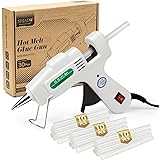In the journey of sustainable gardening, making your own fertilizer is a milestone that not only benefits your garden but also the environment. It’s a simple, cost-effective method that enriches your soil, supports plant health, and reduces waste. This article will explore the advantages of homemade fertilizers and provide you with a straightforward guide to start making your own.
Why Make Your Own Fertilizer?
Environmental Impact: Commercial fertilizers often contain chemicals that can runoff into waterways, harming aquatic life and ecosystems. Homemade fertilizers, on the other hand, are organic and environmentally friendly.
Cost-Effective: By using kitchen scraps, yard waste, and other organic materials, you can create a nutrient-rich fertilizer at no extra cost, saving money in the long run.
Soil Health: Organic fertilizers improve soil structure and promote the activity of beneficial microorganisms, which is essential for a healthy garden ecosystem.
Getting Started: Composting
Composting is the cornerstone of making your own fertilizer. It involves the decomposition of organic matter into humus, a nutrient-rich material that plants love.
Step 1: Choose Your Compost Bin
You can either buy a compost bin or make one yourself using materials like wood pallets or plastic bins. Ensure it has enough ventilation and a lid to keep pests out.
Step 2: Collect Your Materials
Compost requires a balance of ‘greens’ (nitrogen-rich materials like vegetable scraps and grass clippings) and ‘browns’ (carbon-rich materials like dry leaves and cardboard). Aim for a 3:1 ratio of browns to greens.
Step 3: Layer and Maintain
Start with a layer of browns, followed by a layer of greens, and a thin layer of soil. Keep the pile moist, but not wet, and turn it every few weeks to aerate it, speeding up the decomposition process.
Additional Homemade Fertilizer Options
Eggshell Tea: Rich in calcium, eggshell tea is perfect for plants like tomatoes and peppers. Simply boil a gallon of water, add 10-20 clean eggshells, and let it steep overnight.
Banana Peel Fertilizer: High in potassium, banana peels are great for fruiting plants. Dry the peels, grind them into a powder, and sprinkle it around your plants.
Coffee Ground Fertilizer: Used coffee grounds add nitrogen to the soil and improve soil structure. Mix them directly into the soil or add them to your compost.
Tips for Success
- Balance Is Key: Too much of any material can throw off your compost’s balance. Keep a close eye on the greens-to-browns ratio and adjust as needed.
- Turn Regularly: Regularly turning your compost pile will ensure an even decomposition process.
- Patience Pays Off: Compost can take 3-6 months to mature. Be patient, and you’ll be rewarded with high-quality fertilizer.
Making your own fertilizer is a rewarding practice that enhances your garden’s productivity and sustainability. By following these steps and tips, you’ll be well on your way to creating a thriving, healthy garden that’s in harmony with the environment.








